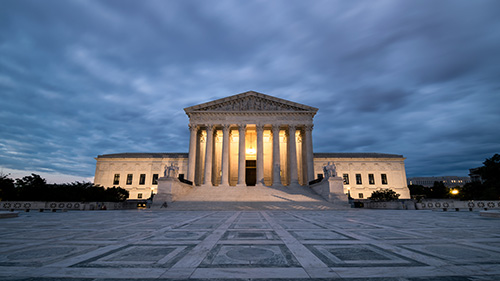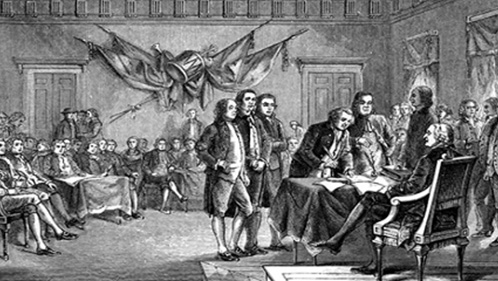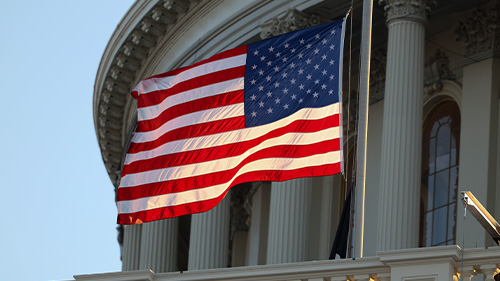Understanding Contextualization in the AP® History Courses
Contextualization is an intriguing skill introduced in the redesigned AP History courses. It plays a crucial role in multiple aspects of the courses,...
AP & Honors Mathematics
Explore Wiley titles to support both AP and Honors mathematics instruction.
Literacy Skills & Intensive Reading
Connections: Reading – Grades 6–12
Empower student success with a proven intensive reading program that develops strong reading skills in striving readers.
Drama, Speech & Debate
Basic Drama Projects 10th Edition
Build students’ confidence and competence with comprehensive, project-based theatre instruction.
Literature
Connections: Literature
Support learners as they study dynamic, relevant texts and bring the richness of diverse voices to students through literature.
Literature & Thought
Develop critical thinking, reading, and writing across literacy themes, genres, historical eras, and current events.
Language Arts
Vocabu-Lit® – Grades 6–12
Help students build word power using high-quality contemporary and classic literature, nonfiction, essays, and more.
Connections: Writing & Language
Help students develop grammar, usage, mechanics, vocabulary, spelling, and writing and editing skills.
Reading/English Language Arts
Measuring Up to the English Language Arts Standards
Incorporate standards-driven teaching strategies to complement your ELA curriculum.
English Language Learners
Measuring Up for English Language Learners
Incorporate research-based best practices for ELLs with an approach that includes a focus on language acquisition strategies.
Mathematics
Measuring Up to the Mathematics Standards
Incorporate standards-driven teaching strategies to complement your mathematics curriculum.
Foundations
Measuring Up Foundations
Help students master foundational math skills that are critical for students to find academic success.
Science
Measuring Up to the Next Generation Science Standards
Give students comprehensive NGSS coverage while targeting instruction and providing rigorous standards practice.
Assessment
Measuring Up Live
Deliver innovative assessment and practice technology designed to offer data-driven instructional support.
For a better website experience, please confirm you are in:
5 min read
John Irish Nov 4, 2025 7:30:02 AM

One of the personal stories I frequently share with my students is how I nearly became a lawyer. I majored in political science and philosophy in college and was accepted into law school. However, during my senior year, I chose to stay in graduate school to pursue advanced degrees, hoping to one day teach at the university level. As often happens, plans changed, and I found myself teaching AP U.S. History in a high school classroom. I share this story with my students to explain my enduring interest in law, especially Supreme Court decisions and their impact on U.S. history. I even joke with them, saying that by the end of the course, they’ll be ready for constitutional law in law school!
This anecdote brings up several important questions about teaching AP U.S. History: What are the requirements for covering Supreme Court cases? Which cases, if any, are mandatory? How much time should be devoted to them? When should they be introduced and taught? And finally, how should they be taught? These are all crucial considerations for any history teacher.
Let’s start with the requirements. The Course and Exam Description (CED) specifically mentions only three Supreme Court cases: Dred Scott v. Sandford, Plessy v. Ferguson, and Brown v. Board of Education. This isn’t much, especially considering the wealth of other significant cases in U.S. history. So why spend time on additional cases that aren’t required? I believe that Supreme Court cases can illuminate many key concepts in the curriculum, such as federalism, constitutionalism, sectionalism, nationalism, progressivism, equality, democracy, and fundamental civil rights. Moreover, these cases can serve as valuable evidence in students’ writing assignments, like short answer questions and essays, including document-based questions (DBQs).
My approach to teaching the course follows what I call the “pothole” theory: we cover a wide range of topics broadly and then dive deep into specific areas. Supreme Court cases are one of those deep dives. I’ve identified four significant periods in the Court’s history, which allows us to dedicate a full day to case studies twice each semester. In the first half of the course, we focus on the two most influential Chief Justices: John Marshall and Roger Taney. We dedicate one day to the Marshall Court and another to the Taney Court. It might seem unusual to spend an entire day on Roger Taney, given his association with the Dred Scott decision, but he was Chief Justice for nearly as long as Marshall—28 years compared to Marshall’s 34. During his tenure, Taney’s court handled many significant decisions, often revisiting issues first addressed by the Marshall Court, making these two figures complementary in the history of U.S. jurisprudence.
John Marshall’s Court is pivotal because it set many precedents that shaped the nation’s legal landscape for the next two centuries. Roger Taney’s tenure served as a bridge between the founding generation and those who would fight in the Civil War, dealing with complex issues of federalism and states’ rights.
In the second semester, we shift our focus away from individual justices to examine broader periods, such as the Gilded Age Court, which tackled many issues that echoed earlier courts’ concerns but in a rapidly changing America. Our final deep dive is into the Warren Court, which presided over landmark cases during the civil rights movement of the 1950s and 1960s. The Gilded Age Court is particularly interesting because it reflects a period when the United States was becoming a global leader economically and politically, grappling with issues like economic regulation, immigration, and citizenship. The Warren Court, on the other hand, is crucial for understanding modern civil rights struggles, as it made several decisions that profoundly impacted freedom and equality in the face of state-level resistance to constitutional rights.
Deciding which cases to cover for each period can be challenging, and I often vary the selections from year to year. However, I eventually settled on a core set of about ten cases per period—enough to cover major themes without overwhelming high school students. For the Marshall Court, I include the following cases: Marbury v. Madison, Fletcher v. Peck, Martin v. Hunter’s Lessee, McCulloch v. Maryland, Dartmouth College v. Woodward, Cohens v. Virginia, Johnson v. McIntosh, Gibbons v. Ogden, Worcester v. Georgia, and Barron v. Baltimore. These cases highlight key issues in early American history and set the stage for later legal developments.
For the Taney Court, my choices are a bit easier, though less familiar. Beyond the infamous Dred Scott decision, I cover the following cases: Charles River Bridge v. Warren Bridge; Mayor of the City of NY v. Miln, U.S. v. The Amistad, Prigg v. Pennsylvania, Luther v. Borden, Cooley v. Board of Wardens, Dred Scott v. Sandford, Ableman v. Booth, Ex parte Merryman, and the Prize Cases. All of which provide valuable insights into antebellum America and challenge some of the established views of the Marshall Court.
The Gilded Age Court offers an exciting selection because most cases are new to students. Outside of Plessy v. Ferguson, none are mandatory in the AP U.S. History course. Still, I cover the following cases: the Slaughterhouse Cases, Minor v. Happersett, Munn v. Illinois, the Civil Rights Cases, Elk v. Wilkins, U.S. v. E.C. Knight Co., Wabash, St. Louis, & Pacific Railway Co. v. Illinois, Plessy v. Ferguson, Williams v. Mississippi, and U.S. v. Wong Kim Ark. All are crucial for understanding issues like monopoly regulation and civil rights in a rapidly industrializing nation.
Finally, for the Warren Court, I cover the following cases: Brown v. Board of Education, Loving v. Virginia, Griswold v. Connecticut, Cooper v. Aaron, Engel v. Vitale, Abington School Dist. v. Schempp, Mapp v. Ohio, Miranda v. Arizona, Bolling v. Sharpe, and Gideon v. Wainwright. These decisions were pivotal during a turbulent period in American history, addressing issues of civil rights and liberties at a time when they were hotly contested.
When it comes to teaching these cases, I prefer interactive methods over traditional lectures. I often use two main approaches: small group seminars and modified jigsaw activities.
Small group seminars are an excellent way to encourage collaborative learning and critical thinking. In this format, I divide the class into groups of 5-7 students, each sitting in a circle to create a more intimate and discussion-friendly environment. Before the seminar, students are assigned specific court cases to research at home, using a graphic organizer that I provide. This organizer includes important questions I want them to answer, key details such as the date of the case, the facts, the legal questions presented to the Court, and the Court’s decision and reasoning. Once in their groups, students discuss a set of prepared critical thinking questions. These questions are designed to provoke thoughtful debate and require students to apply their knowledge, analyze the Court’s decisions, and consider the broader implications of these rulings. For example, a question might be, “In what ways can Marshall be classified as a nationalist? What court rulings support this description, and are there any cases that complicate this classification?” Another might ask, “How would the Marshall Court have ruled differently from the Taney Court, and what accounts for these similarities and differences?” This strategy encourages students to engage in evidence-based discussion, build on each other’s ideas, and respectfully challenge different perspectives. The seminar format also helps develop important skills such as argumentation, active listening, and critical thinking, all of which are crucial for success in AP courses and beyond.
The modified jigsaw activity is another strategy I use to teach Supreme Court cases. This method divides the class into smaller groups (with no more than 4 per group), with each group becoming “experts” on a specific case. Again, students are expected to come prepared, having completed their research by completing the graphic organizer for homework. Each group is assigned one case, then discusses the case among themselves to consolidate their understanding. After this initial discussion, groups present their findings to the entire class covering key points such as the context of the case, the arguments presented, the Court’s decision, and its significance in American legal history. This jigsaw approach ensures that every student is both a teacher and a learner, which fosters a sense of responsibility for their learning and encourages peer-to-peer education. It also allows students to encounter multiple perspectives and interpretations, which is vital for developing a well-rounded understanding of the complexities of constitutional law and its impact on American society.
After these activities, we reconvene as a whole class to debate which cases were most and least important for their respective periods, requiring students to rank their top three and bottom three choices and defend their positions.
This deep dive approach allows students to engage deeply with U.S. history through a focused lens, encouraging independent research and critical analysis. While not all the cases we cover are required by the AP U.S. History CED, they provide valuable opportunities to explore themes and topics often overlooked in standard textbooks. This method not only prepares students for the AP exam but also equips them with a nuanced understanding of American legal history.

Contextualization is an intriguing skill introduced in the redesigned AP History courses. It plays a crucial role in multiple aspects of the courses,...

Unlock the power of historical thinking and writing as you elevate complexity and engagement in AP History classrooms. Presented by experienced AP...

Do you need some ideas and/or extra support to organize your AP® United States History course? Join Lou Gallo as he shares ideas on how to organize...

From a practical point of view, argumentation is at the heart of the free response section of the AP exam. This can be particularly difficult with...

Period 7 in the AP U.S. History curriculum is one of the most extensive, spanning from 1890 to 1945. This era begins with debates over imperialism...

You may have heard about the “Irish” Thesis Formula—it is all over the internet. Some teachers like it, others hate it, but whatever you think about...

One of the things that I spent most of my time thinking about, when the redesigned AP U.S. History course went into effect, was how to deal with the...
.jpg)
Do you need some ideas and/or extra support to organize your AP® European History course? Join Lou Gallo as he shares ideas on organizing your course...

Join AP experts Brandon Abdon, Colin Baker, and Bob Topping to discover scaffolded approaches to teaching the APUSH, AP Euro, and AP World History...

This interactive webinar focuses on scaffolded approaches to the finishing touches necessary for higher-level success on the LEQ and DBQ portions of...

Experienced AP World History teacher Dave Drzonek and AP World History Exam table leader Charlie Hart discuss what students did well and what they...

The Secondary Source Short Answer Question (SAQ) on the AP history exam presents a unique challenge: students must analyze and synthesize historical...
